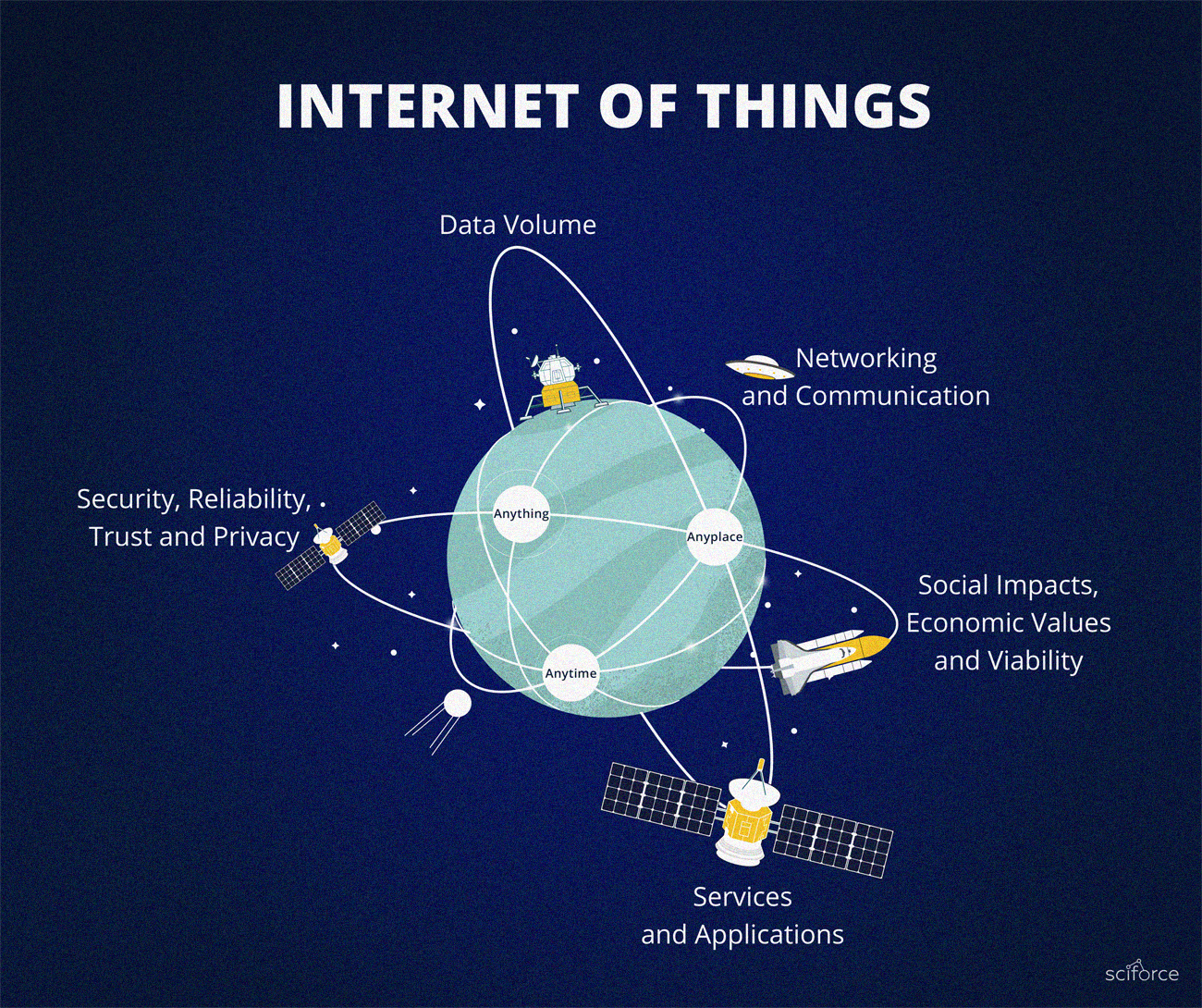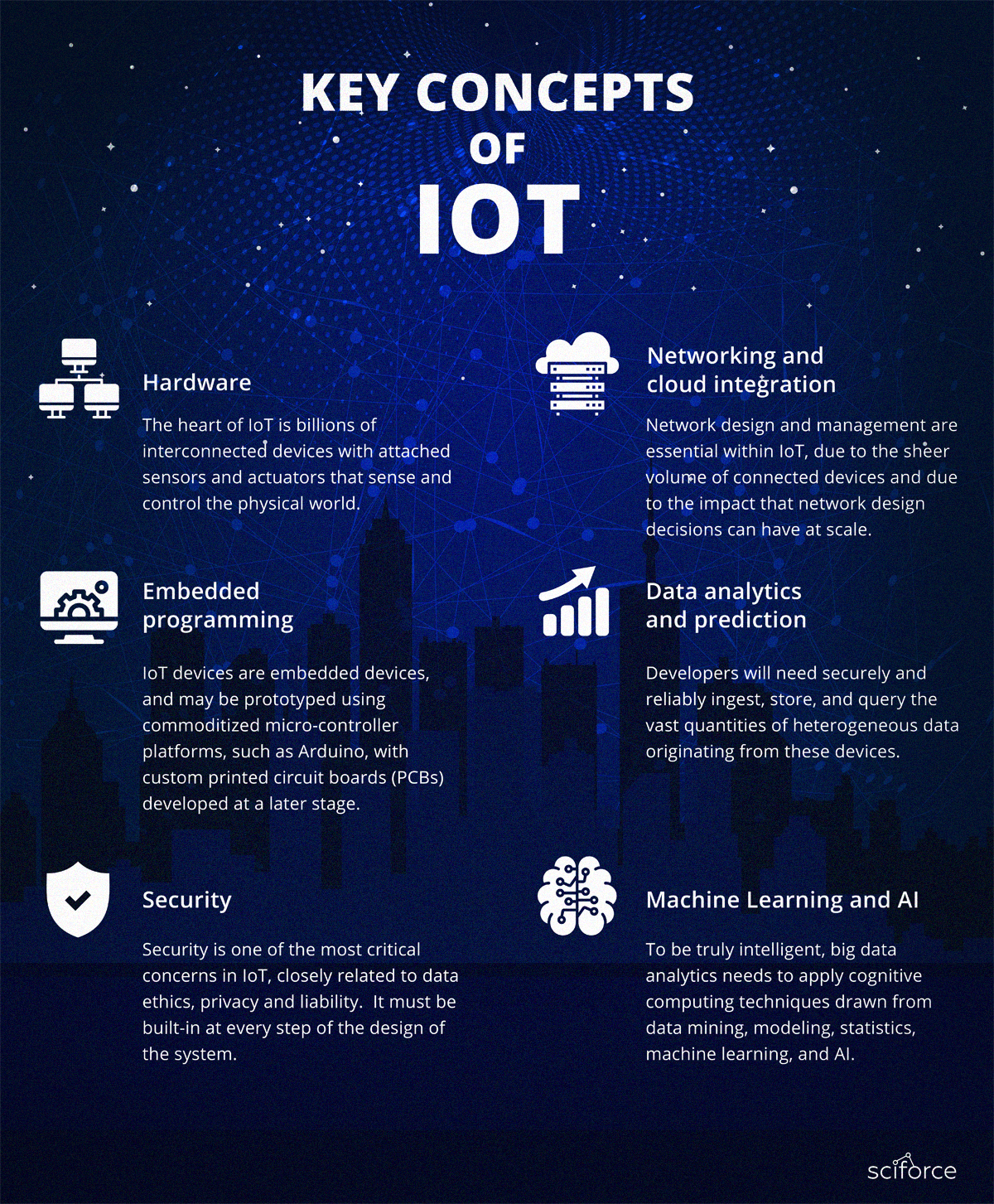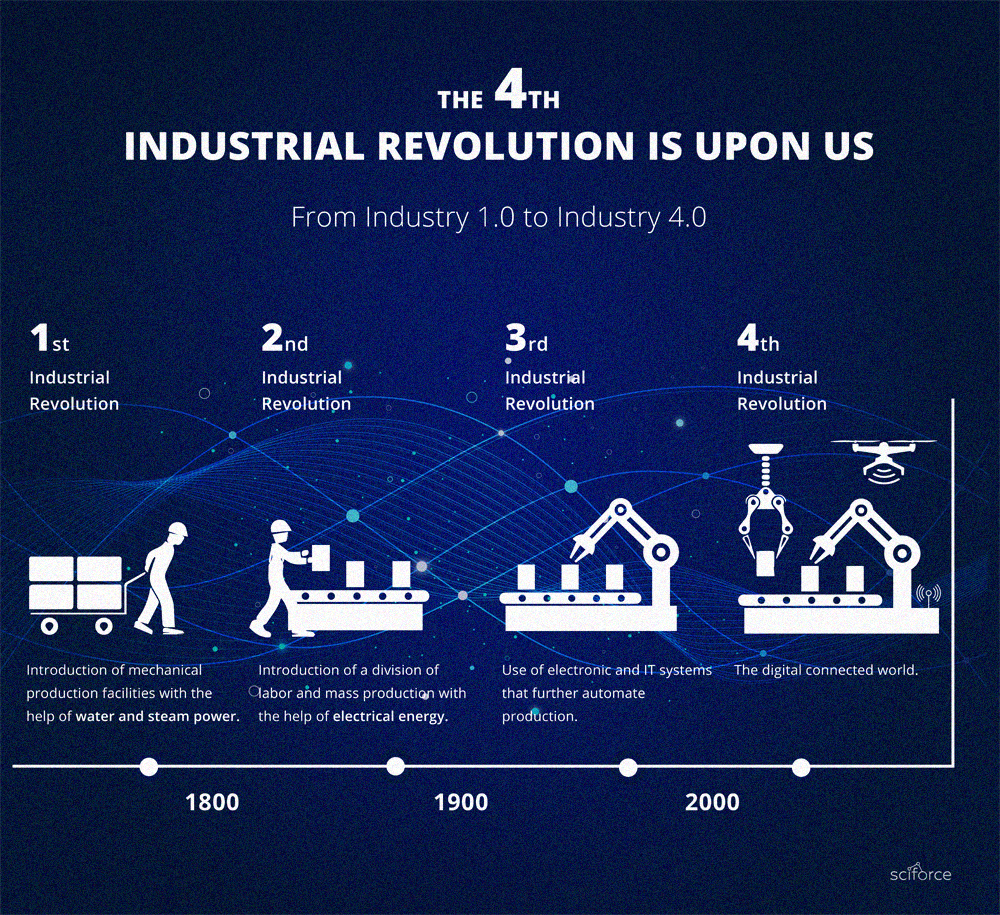Internet of Things (IoT). What is IoT?
If we go into the definition of the Internet of Things, we find out that it is the concept of inter-networking of physical devices, connected devices, smart devices, and other devices embedded with electronics, software, sensors, actuators, and network connectivity that enable these objects to collect and exchange data.
What it means, is that an object can be sensed or controlled remotely across the existing network infrastructure that enables direct integration of the physical world into computer-based systems, which, in turn, improves their efficiency and accuracy and reduces human intervention.


If augmented with sensors and actuators, the technology becomes an instance of a more general class of cyber-physical systems, which also encompasses technologies such as smart grids, virtual power plants, smart homes, intelligent transportation and smart cities.
Key Concepts of IoT


Hardware — The heart of IoT is billions of interconnected devices with attached sensors and actuators that sense and control the physical world. In addition to network connectivity to transmit the data they collect, these devices require some basic processing and storage capabilities, provided by a micro-controller or by an integrated circuit, such as a System-on-a-Chip (SoC) or a field-programmable gate array (FPGA) .
Embedded programming — IoT devices are embedded devices, and may be prototyped using commoditized micro-controller platforms, such as Arduino, with custom printed circuit boards (PCBs) developed at a later stage. Prototyping with these platforms requires circuit design skills, micro-controller programming, and a deep understanding of hardware communication protocols like serial, I2C, or SPI used to establish communication between the micro-controller and the connected sensors and actuators. The embedded programs are often developed using C++ or C, however Python and JavaScript are becoming more popular for prototyping IoT devices.
Security — Security is one of the most critical concerns in IoT, closely related to data ethics, privacy and liability. It must be built-in at every step of the design of the system. With millions of new devices connected every day, the number of potential points of attack grows daily. With so much at stake, security engineering skills, including threat assessment, ethical hacking, encryption to ensure data integrity, securing network architectures and applications, as well as event monitoring, activity logging, and threat intelligence, move to the foreground of the IoT development projects.
Networking and cloud integration — Network design and management are essential within IoT, due to the sheer volume of connected devices and due to the impact that network design decisions can have at scale. Connectivity enables devices to communicate with other devices as well as with applications and services that are running in the cloud. Though cloud computing and the IoT are two very different technologies, real-time data streaming and cloud integration are crucial for the proper functioning of the Internet of Things. Cloud infrastructure is used for data storage, processing and analysis, as well as for implementation of the business logic of IoT applications.
Data analytics and prediction — The number of IoT devices transmitting data increases on the daily basis, which turns big data into huge data. Developers will need securely and reliably ingest, store, and query the vast quantities of heterogeneous data originating from these devices. Besides, as many IoT devices generate latency or time-sensitive data, it is also necessary to filter or discard irrelevant data.
Machine Learning and AI –To deliver value and make sense of the huge volumes of data that is generated by IoT devices, machine learning and AI skills are the ultimate must-have skill for IoT developers. To be truly intelligent, big data analytics needs to apply cognitive computing techniques drawn from data mining, modeling, statistics, machine learning, and AI. These techniques can be applied in real-time both to sensor data streams for predictive analysis and to autonomously make decisions in response to incoming data. Besides, machine learning can be applied to historical data to identify patterns or anomalies in the data.
IoT and Industry
The impact of IoT on industrial ecosystems has resulted in emergence of robust physical-cyber connectivity, often called the fourth industrial revolution aka Industry 4.0 , also known as the Industrial Internet of Things (IIoT). The connected ecosystem encompasses physical connected assets: including those on the manufacturing shop floor as well as the manufactured connected devices such as connected cars or appliances.


The IoT/IIoT digital transformation in Manufacturing is providing robust communication, understanding and opportunities for innovation involving orchestration of Things, People, and Systems in end-to-end automated value streams.
IoT in Healthcare, or Internet of Medical Things
Similar to industry, IoT has the potential to redefine the healthcare system. The Internet of Medical Things (IoMT) is virtually the collection of medical devices and applications that connect to healthcare IT systems through online computer networks. As the amount of connected medical devices increases, the power of IoMT grows as grows the scope of its application, be it remote patient monitoring of people with chronic or long-term conditions or tracking patient medication orders or patients’ wearable mmHealth devices, which can send information to caregivers. This new practice to use IoMT devices to remotely monitor patients in their homes spares them from traveling to a hospital whenever they have a medical question or change in their condition which and revolutionize the whole healthcare ecosystem and doctor-patient communication settings.
Experts estimate that the IoT will consist of about 30 billion objects by 2020. Starting from a single sensor and to the global network of orchestrated devices, IoT sketches for us an exciting new world, and SciForce is eager to be a part of it. With our expertise, we can help you securely connect smart devices, manage and process data and ultimately transform the way your business runs.
